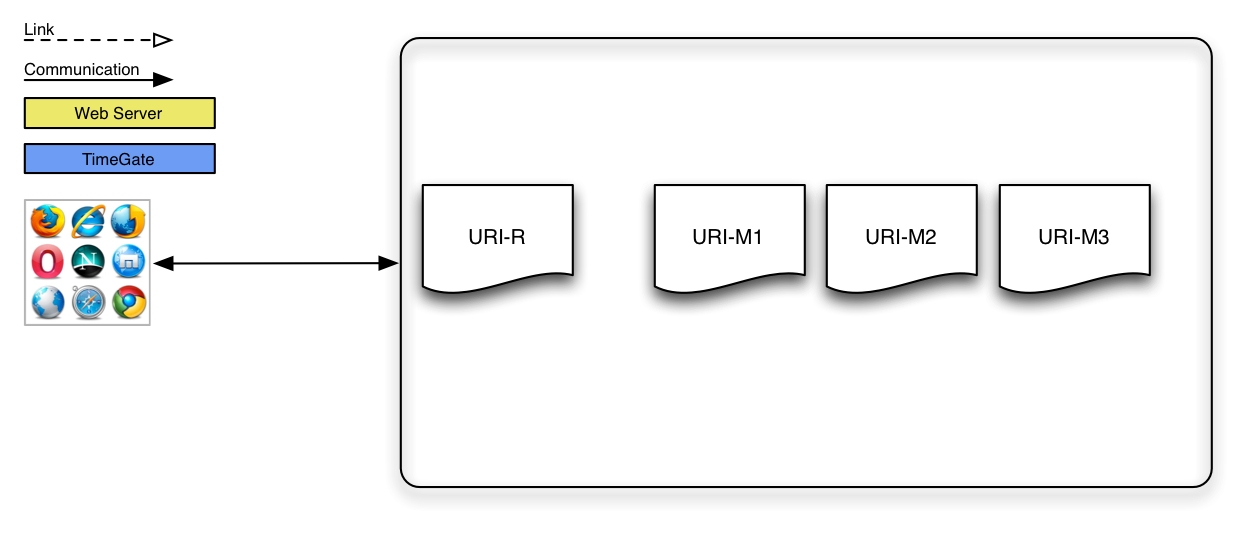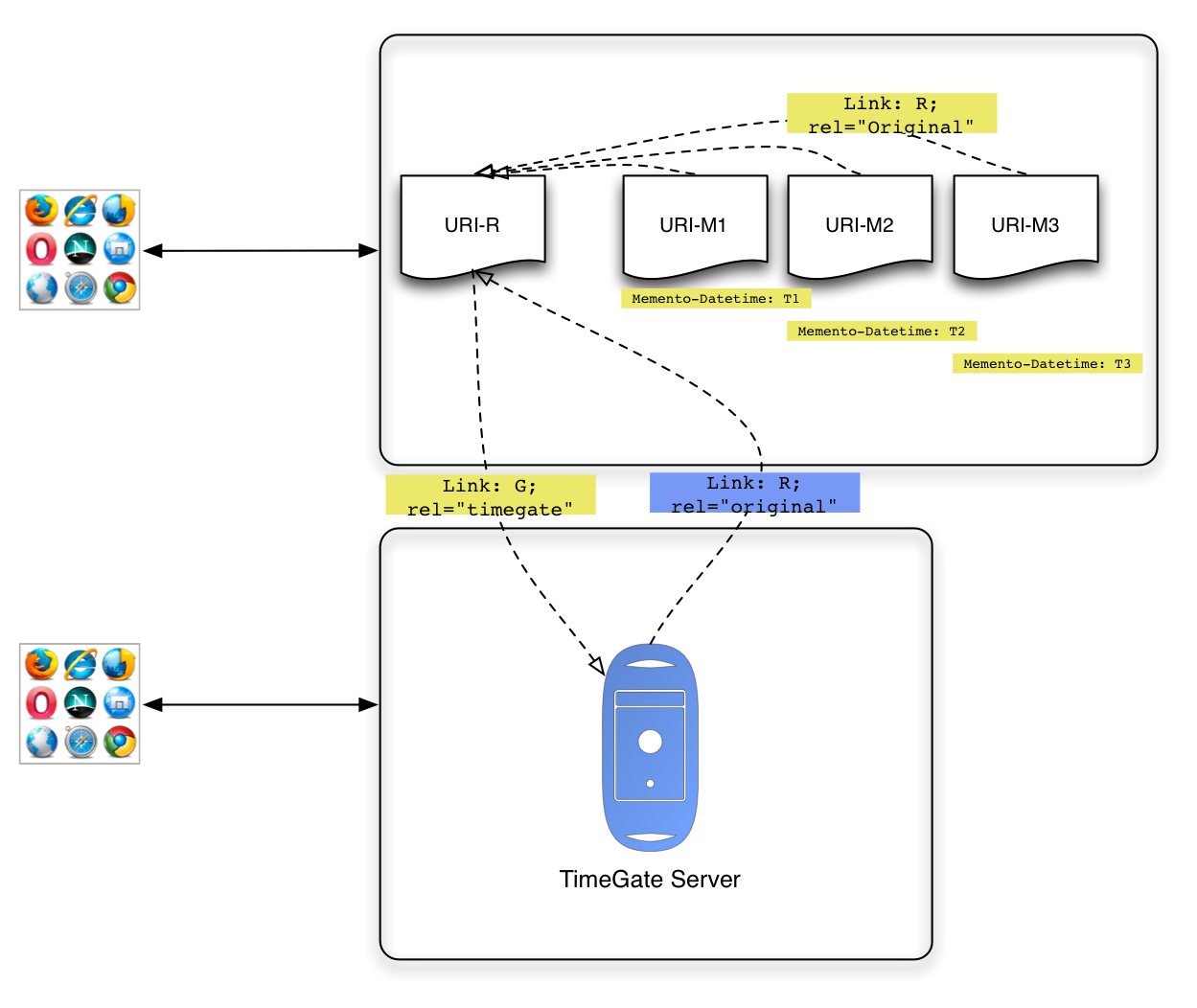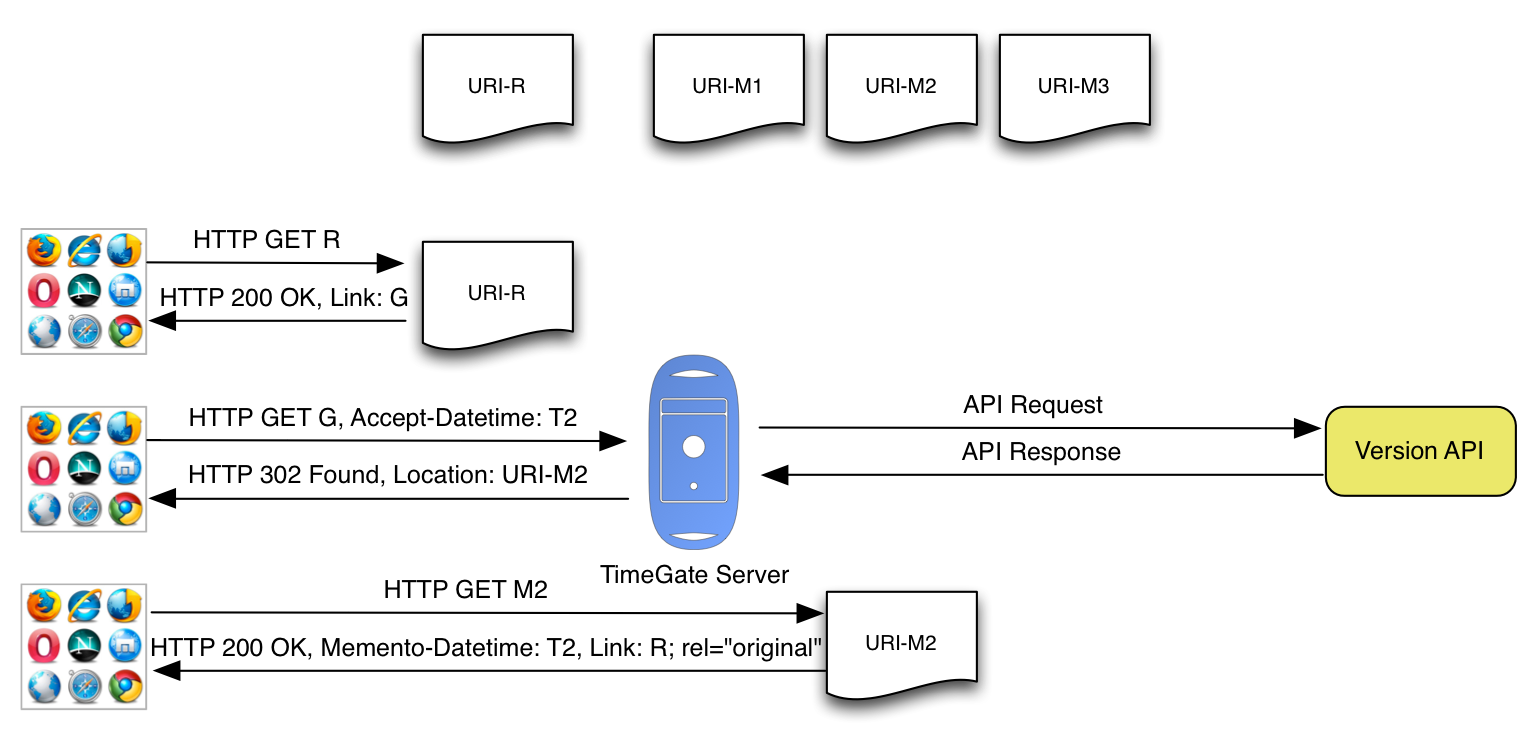-
Notifications
You must be signed in to change notification settings - Fork 15
The Big Picture
From now on, this documentation will refer to the web server where resources and archives are as the web server and to the Memento TimeGate datetime negotiation server as the TimeGate.
- Suppose you have a web resource accessible in a web server by some URI. We call the resource the Original Resource and refer to its URI as URI-R.
- Suppose a web server has a snapshot of what this URI-R looked like in the past. We call such a snapshot a Memento and we refer to its URI as URI-M. There could be many snapshots of URI-R, taken at different moments in time, each with their distinct URI-Ms. The Mementos do not necessary need to be in the same web server as the Original Resources.
This figure represents the current situation; Without date time negotiation, the client has to find by hand the URIs for the previous versions of a web resource. If they exists:
 To make this web resources Memento compliant, two things need to be added. The new components of the systems are the TimeGate and Memento HTTP headers at the web server's side:
To make this web resources Memento compliant, two things need to be added. The new components of the systems are the TimeGate and Memento HTTP headers at the web server's side:
 With these links, the client now gets the address of the TimeGate when retrieving an Original Resource or a Memento. Then, he can use datetime negotiation with the TimeGate to get the URI of an archived version (
With these links, the client now gets the address of the TimeGate when retrieving an Original Resource or a Memento. Then, he can use datetime negotiation with the TimeGate to get the URI of an archived version (URI-M2) of the Original Resource at specific a point in time (T2):

The TimeGate will manage the framework's logic in a generic manner. However, every web server has its specific way to store snapshots and to construct URI-Ms. Thus, a specific plugin must be written for every web server. Such a plugin is called a handler. A handler will typically talk to an API to return the list of URI-Ms given a URI-R, but there are several alternatives to this setup.

The system can be seen as three components.
- The Memento user who wishes to retrieve an older version of a resource
- The web server where the active version (original URI) and revisions (mementos) can be accessed. This entity must provide a way to access these versions. Typically through an API.
- The TimeGate which itself is composed of two main elements:
- One API-specific handler
- The generic TimeGate code